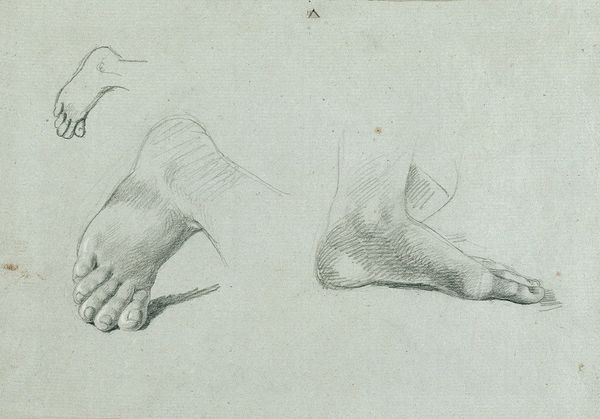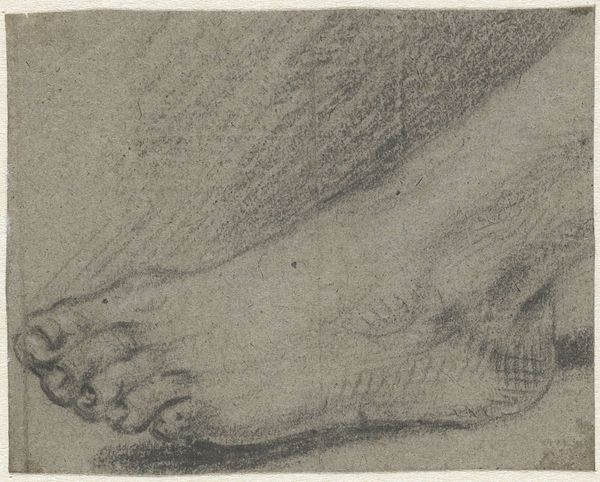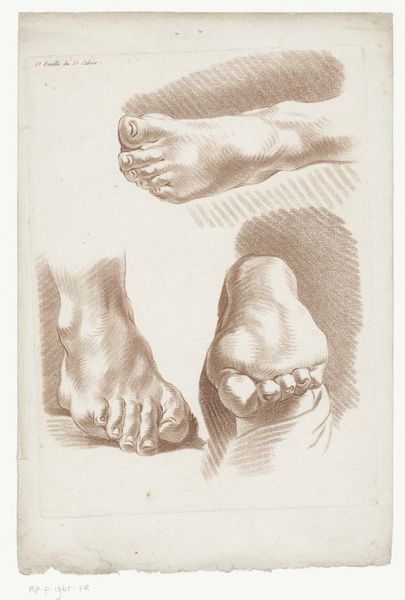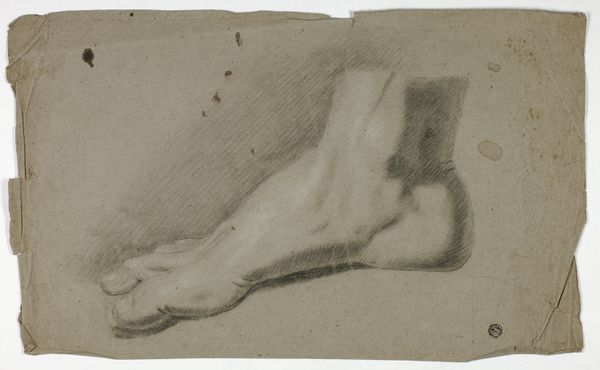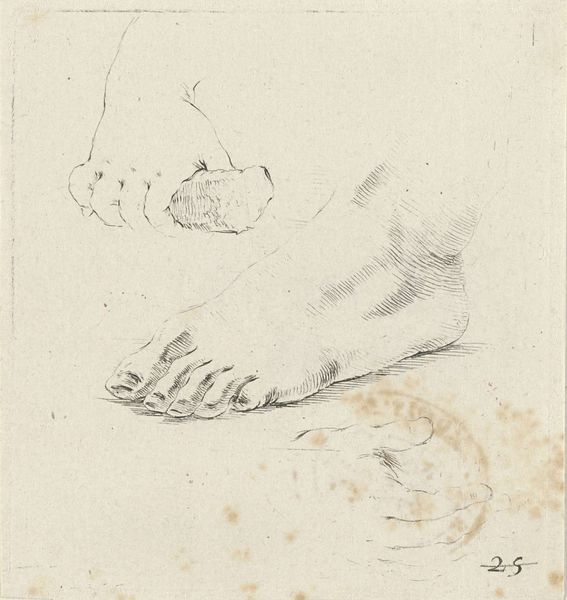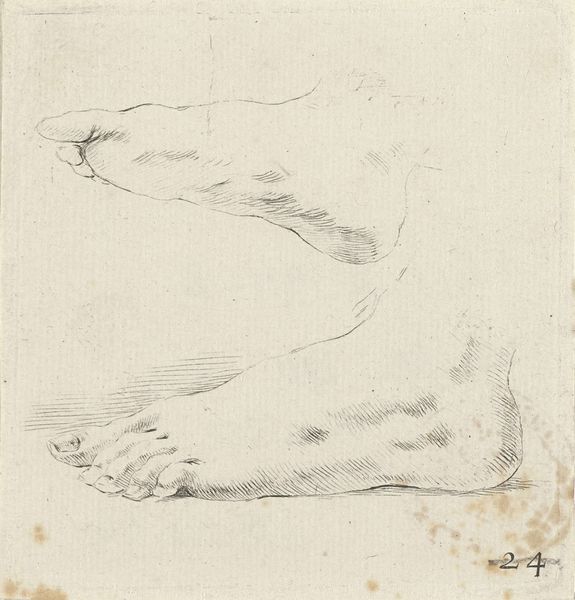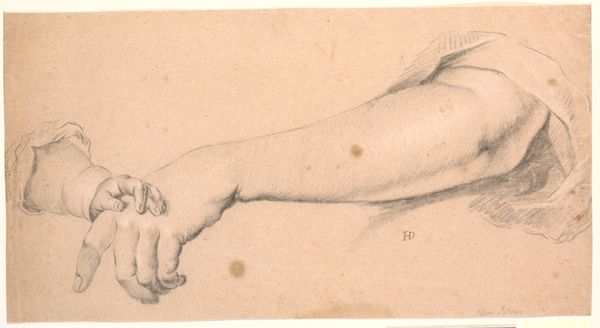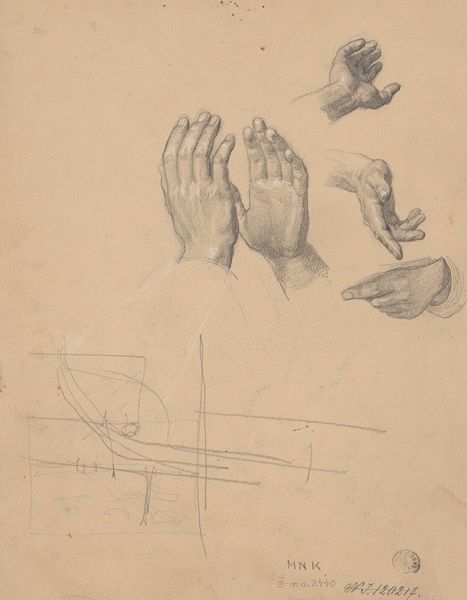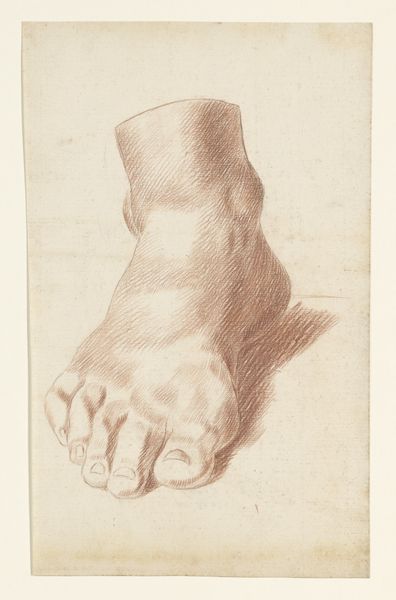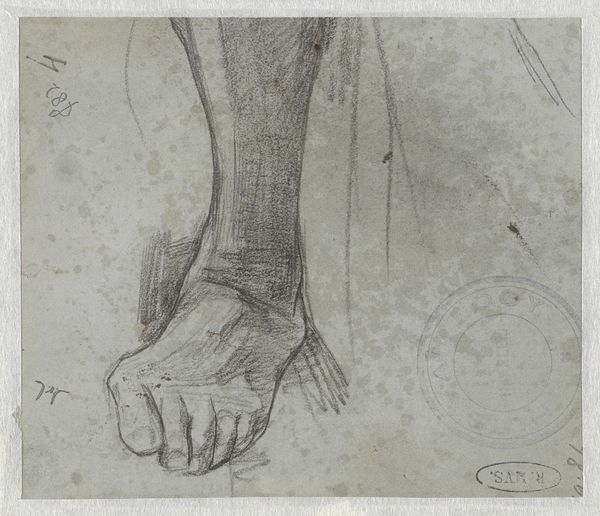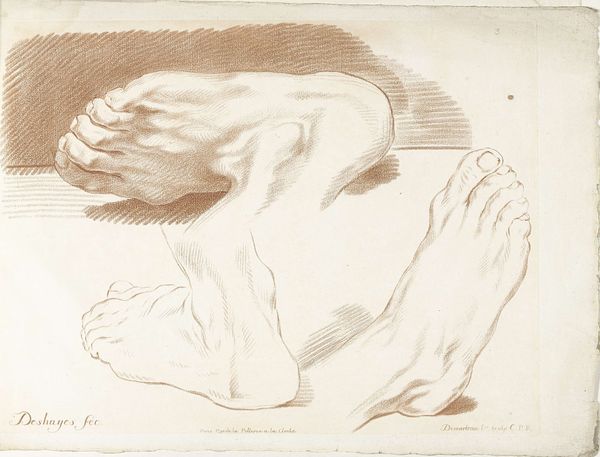
drawing, dry-media, charcoal
#
drawing
#
charcoal drawing
#
figuration
#
dry-media
#
pencil drawing
#
charcoal
#
nude
Copyright: Rijks Museum: Open Domain
Curator: Before us is a charcoal drawing titled Annotaties by Willem Witsen, created somewhere between 1915 and 1920. It's currently part of the Rijksmuseum collection. Editor: The first thing that strikes me is how vulnerable this makes me feel, looking at the close detail of a human form so relaxed... almost melancholic. Curator: Interesting. I see it more in terms of its construction; the rapid, almost frantic marks of the charcoal, especially in rendering the forms, create an unfinished and inherently bodily aesthetic that reminds me of shop floor conditions and artistic labour. What does this say about art-making and representation at the time, and access for certain kinds of workers, if any? Editor: Well, I'm more inclined to see it as representing something broader about embodiment. How can one separate this image from histories of medicalized racism for Black folks whose bodies were hyper-visible in science. Curator: Indeed, we need to examine Witsen's studio practice too, including models' working conditions. The materiality, the simple paper and charcoal, speaks volumes about what was readily available. I am certain it informed the ways and range the artist had at their disposal to translate their subject in accordance to those material boundaries. What are your thoughts about how Witsen's status afforded him this depiction? Editor: You're right to push me. We have to confront the imbalance here, in both artistic representation and economic circumstance. I think these considerations help us contextualize it further and not shy away from complicated feelings. I do wonder if Witsen understood his vantage and sought, via medium or composition, to democratize his images or make them open to multiple social strata. Curator: Ultimately, this drawing is just one small part of a wider visual culture, of practices and technologies shaping art in society at that specific point in history. How Witsen chooses charcoal shows us just a slither. I think it serves as a jumping point into greater inquiry that makes us realize there were choices behind its look. Editor: A very compelling reminder. I think it would serve us well to see similar images of nudes in museums and discuss the gendered and racial undertones behind how these bodies get displayed and valued in the contemporary art market, with respect to past labor dynamics.
Comments
No comments
Be the first to comment and join the conversation on the ultimate creative platform.
